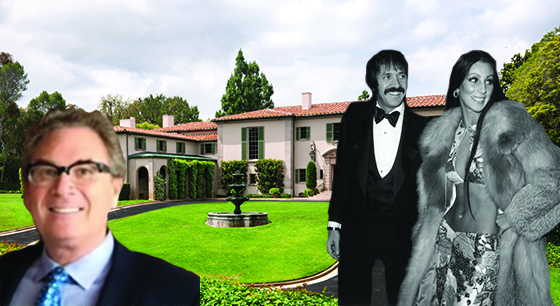Expansive spec homes dominated the highest end of the Los Angeles luxury market in 2016, accounting for six of the 10 priciest transactions, according to The Real Deal’s analysis of MLS data. But two pieces of new legislation threaten to slow their quick rise.
The Los Angeles Planning Commission voted last week to crack down on megamansions in Bel Air and Beverly Crest, recommending that the City Council require proposed single-family homes larger than 20,000 square feet to go through the review process. On Dec. 7, the City Council voted to reduce the maximum allowable living space on proposed single-family properties citywide, closing several loopholes that builders have used to construct spec homes.
Experts interviewed by TRD expect the restrictions will put a damper on the spec construction boom, hurting the value of potential teardowns and making it harder for developers to squeeze every dollar out of plots.
“From a valuation standpoint, in order to justify the construction costs, you really do want to maximize square footage,” said David Waite, a land-use attorney at Cox, Castle & Nicholson.
Reducing “Mansionization”
Mansion has become a dirty word in L.A. Perhaps the most notorious case of so-called “mansionization” is the case of Mohamed Hadid, whose “Starship Enterprise” spec home in Bel-Air got him into hot water with the authorities.
The citywide council vote was a reaction to concerns about mansionization, according to Council member David Ryu, who worked with chief sponsor Paul Koretz on the measure. The construction of new homes that dwarf their neighbors creates “toxic community disputes,” Ryu said, often “pitting neighbor against neighbor.”
The Council instructed City Attorney Mike Feuer to rewrite two sections of zoning regulations — the Baseline Mansionization Ordinance (BMO) and Hillside Baseline Ordinances — to reduce the allowable size of new construction and remodeling projects for properties that are zoned for single-family houses.
The changes will include a reduction in floor-area ratio (FAR) from 0.50 to 0.45 on single-family lots, and the elimination of certain exemptions such as a 20 percent FAR bonus for eco-friendly projects and an exception of up to 250 square feet for attached porches and patios.
The restrictions will discourage the construction of eco-friendly projects, Waite said, but ultimately homeowners and builders can use smarter design to make up for the decreased space.
The changes could cool the construction boom, however, and lower the value of teardowns, said Michael Nourmand, president of brokerage firm Nourmand & Associates.
Because of the rise of pricey spec homes, potential teardowns in tony zip codes clocked in high in 2016. Bob Shapiro of spec development firm Woodbridge Group, for example, purchased the Owlwood estate, Sonny and Cher’s former home in Holmby Hills, for a whopping $90 million in September.
But the luxury market will weather a temporary dip, Nourmand said. When the 2008 BMO passed, people reacted as if it “would be the end,” he said. After those changes, builders kept building and people kept buying. He likened the changes to taking a class graded on a curve.
“I think that once you have a set of rules people adjust and play by those rules,” he said, adding that in the interim, existing spec homes might see a bump in values as new supply could be limited.
Did it go FAR enough?
The original BMO and Hillside ordinances did not ultimately slow the rise of what some call oversized homes. More than 57 million square feet of additions and new construction were added to single-family-zoned properties throughout the city between 2005 and 2015, according to a report released by the City Planning Commission in July.
The Bel Air-Beverly Crest area, in particular, was rife with spec action. Thirteen of the 18 permits issued for homes larger than 20,000 square feet in L.A. from 2011 to 2015 were in that area, a city planning report found.
Homeowners and builders were able to get around the 2008 ordinance — which targeted FAR, reducing it to 0.50 — by tapping exemptions. Mansionization opponents — such as the neighborhood councils in Valley Village and the Greater Wilshire area, both of which submitted community-impact statements backing the Dec. 3 council action — have argued that the exemptions allowed spec builders to exploit the city’s land-use regulations.
“These larger properties provide no additional housing to our city, but do price out our long-term residents,” said Ryu, who represents areas including La Brea, Hollywood Hills and Hancock Park. “We have lost hundreds of homes, displaced middle-class families and changed the historic character of our neighborhoods.”
Some planning experts think FAR is an ineffective way to regulate mansion building. Benjamin Reznik, who chairs Jeffer Mangels Butler & Mitchell LLP’s land-use department, pointed to Aspen, Colo., as a municipality that has managed the issue without restricting FAR.
Aspen has expanded its height restrictions for new developments in recent years, and people have adapted by adding bedrooms and more living space below grade.
“They avoided mansionization,” Reznik said. “But they didn’t tell people you couldn’t have a bigger house or a bigger family.”
